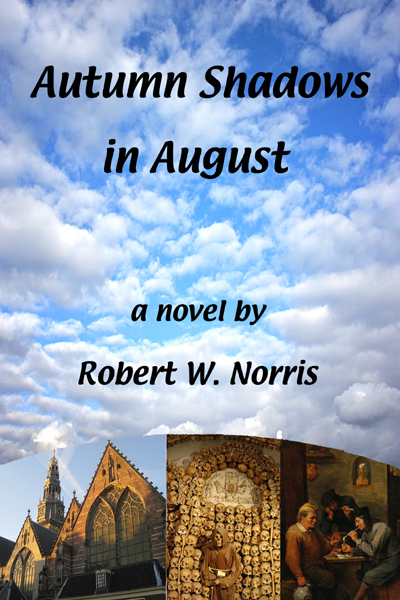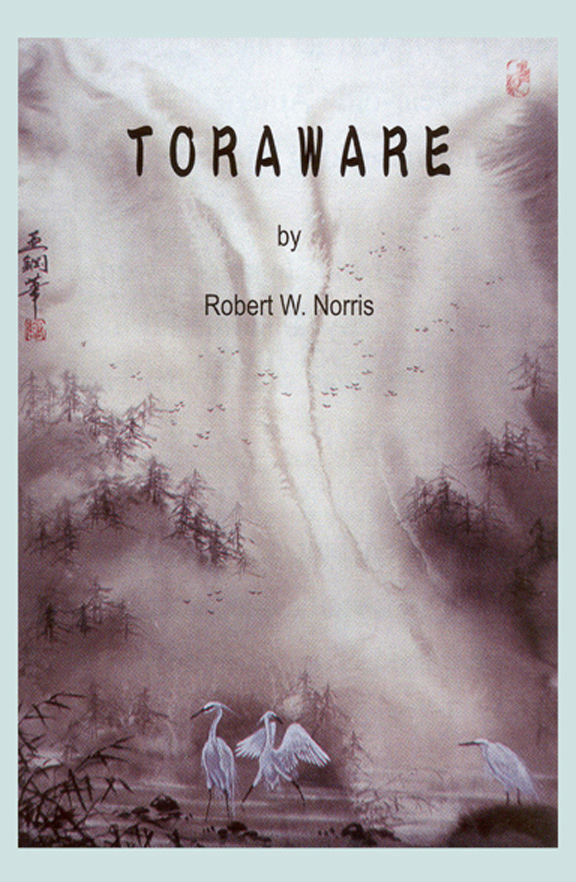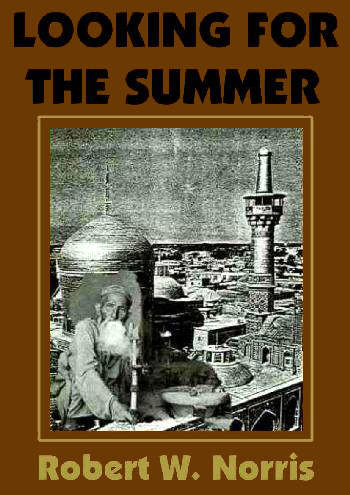
Home About Robert CV The Good Lord Willing and the Creek Don't Rise: Pentimento Memories of Mom and Me Novels Reviews ESL Papers (can be viewed online by clicking on titles) The Many Roads to Japan (free online version for ESL/EFL teachers and students) Contact     |
by Robert W. Norris 2003. Bulletin of Fukuoka International University, No. 9: 39-50 Introduction Conditional sentences are a big obstacle to overcome
for teachers and students of English as a second or
foreign language (ESL/EFL). Conditionals are
linguistically and cognitively complex structures that
express a variety of meanings, are realized through a
variety of forms, and are used for a variety of
discourse functions. Why are Conditionals so Difficult? Celce-Murcia and Larsen-Freeman (1999) cite a survey
conducted by Covitt (1976) that found that conditionals
ranked fifth (behind articles, prepositions, phrasal
verbs, and verbals) among the most serious teaching
problems encountered by ESL teachers in the Los Angeles
area. The main difficulties lie in the following
aspects: Form The form of conditionals is different from other
structures in English because they have two clauses: a
main clause and a subordinate clause. The subordinate
clause typically begins with the adverbial subordinator
"if." Quirk and Greenbaum (1973) state that conditional
sentences express the dependence of one set of
circumstances (i.e., the result clause) on another
(i.e., the "if" clause). In addition, the ordering of
the two clauses can be reversed in most cases. Halliday and Hasan (1976) mention that certain pro-forms (e.g., "so" and "not") can be used to replace the entire conditional clause following "if." Various other conjunctions and phrases such as "only if," "unless," "even though," "even if," "whether or not," "providing/provided that," "on condition that," "as long as," and "on the understanding that" can also introduce conditional clauses. The main focus of this paper, however, is on "if" conditionals. Meaning2 There are many possible combinations of the clauses
mentioned above, and the meanings they convey have
subtle differences that can confuse even native speakers
of English. The context in which a conditional is used
has to be referred to in order to understand if you are
dealing with a possibility, a regret, a wish, or an
action that the speaker is willing to perform. Implicit inference conditionals express inferences about specific time-bound relationships (e.g., "If anyone celebrated that night, it was Peter") and tend to have the same tense and aspect or the same modal in both clauses. Compared to habitual and generic conditionals, however, a wider range of tenses and auxiliary verbs are used. "When" or "whenever" cannot be substituted for "if" without making the sentence nonsensical. Explicit inference conditionals are similar to implicit inference conditionals in that both types refer to specific time-bound events or states in the "if" clause. Both can refer to past as well as present time. Explicit inference conditionals, however, do not have parallel tenses, aspects, or modals in both clauses. The result clause contains an inferential modal -- usually "must" or "should." Past inference conditionals with either of these modals is expressed by adding "have + -en" (i.e., past perfect) after the modal. The second type of semantic relationship that Celce-Murcia and Larsen-Freeman (1999) describe is future (or predictive) conditional relationships. These sentences express future plans or contingencies. The usual pattern has the simple present tense in the "if" clause and explicit indication of future time (i.e., "will" or "be going to") in the result clause. The condition, however, can be weakened by using the modal "should" or the verb "happen" (or both together) instead of the present tense in the "if" clause; the prediction in the result clause can be weakened by substituting another modal (e.g., "should," "may," "might") for "will" or "be going to." This adds to the number of possible patterns students must be aware of. Imaginative conditionals, the third type of semantic relationship, have two subsets: hypothetical conditionals and counterfactual conditionals. Hypothetical conditionals express in the "if" clause events or states thought unlikely yet possible by the speaker. Counterfactual conditionals express in the "if" clause events or states thought impossible by the speaker. By using "should," "happened to," or "should happen
to," the negative quality of the "if" clause in
hypothetical conditionals can be weakened more so the
possibility of the result is stronger. This weakening of the "if" clause does not occur in
counterfactual conditionals because the "if" clause is
strongly negated and the condition remains impossible. Counterfactual conditionals refer to present or past impossibilities, not future impossibilities. That is, we don't know what imipossibilities are in the future; we can only infer them. If Gandhi were alive, he would be shocked. (present)Oversimplified Explanations Celce-Murcia and Larsen-Freeman (1999) note that ESL textbooks and grammars often introduce the same three forms, which do not cover the complexity and variety of English conditional forms and meanings. The traditional "type 1, 2, and 3" conditionals noted by Celce-Murcia and Larsen-Freeman (1999:545) are: Time-Tense Relationships This is a problem area that can be utterly confusing to
ESL/EFL students. Conditionals require coordination of
verb forms in both the "if" and result clauses. This is
complicated by the fact that verb forms in conditional
sentences often do not retain their normal references to
time. Gordon (1985:85) states that "the past is
used to represent improbability in the present or
future, and the past perfect is used to refer to
impossible events that didn't happen in the past." In
addition, the present is used to refer to the future in
the "if" clause of future predictive conditionals. Table 1: THE BULL FRAMEWORK
In terms of hypothetical conditionals, Celce-Murcia and Larsen-Freeman (1999:553) say [W]e need two imaginative time lines for English so that we can account for both hypothetical present and future time and counterfactual present and past time. Also, we feel that the two imaginative axes are somewhat unique in that there is no "time before," simply a basic time and a time after (the perfect forms have other functions in these axes because hypotheticals and counterfactuals are shifted back in time to convey unreality). Thus we would represent the two imaginative axes as follows:
Number, Frequency, and Use of Conditionals According to Hill (1960), there may be as many as 324 distinct tense-modal sequences in English conditional sentences. Several studies analyzing corpora of conditionals have been made, but Hwang's (1979) is frequently referred to. Hwang (1979) found that seven patterns accounted for about two-thirds of the conditional sentences in her spoken and written corpora. The frequency ranking for Hwang's (1979) corpora is shown below. Table 2: Hwang's (1979) Frequency Ranking of Conditionals3
Concerning sentence-final "if" clauses, Ford and Thompson's (1986) written corpus contained only 23% sentence-final "if" clauses, while their oral corpus contained 18%. Ford and Thompson (1986) observed that most of the written corpus fell into three categories:
Ford (1997) examined conditionals and their functions in spoken discourse based on 55 conditionals from casual conversations of adult native speakers of English. Ford (1997:390) illustrates five social discourse functions that demonstrate conditionals offer speakers choices for "potentially problematic contexts" because the "if" clause expresses options and possibilities. Ford's (1997) five social discourse functions of conditionals include:
Another area of semantic and psychological processes reflected in conditional sentences is desirability. Mayes (1994) investigated this area in an interview with Noriko Akatsuka, a UCLA professor with over 15 years of experience in teaching Japanese and linguistics. Akatsuka believes conditionals help us explore the relationship between language and the human mind because conditionals reflect complex thought processes and the notion of desirability. Akatsuka believes that instead of considering conditional sentences as only a matter of truth value, we should consider them as examples of how language form reflects psychological thought. Mayes (1994) states that conditionals have traditionally been researched with respect to philosophy and mathematical logic rather than linguistics, as seen in the equation "if p, then q" depending on the truth of the constituent premises. Akatsuka questions why we "try to represent the meaning of natural language conditionals using mathematical logic" (Mayes, 1994:450). The psychological state of the speaker (e.g., sorrow, regret, disbelief, cynicism) is an important element in natural speech. According to Akatsuka (Mayes, 1994), the notion of desirable/undesirable allows us to begin to understand the psychological state of the speaker, the context, and the semantic meaning of conditionals. Akatsuka's research has centered on the notion of desirability in the conditionals that Japanese, Korean, and English-speaking American parents use in speaking with their children. In all three languages, the most common types of conditionals were predictive and future temporal conditionals, both of which illustrate the importance of desirability of outcomes in their expressions. Predictive conditionals consist mainly of warnings and threats (e.g., "I'll send you to your room if you don't eat your vegetables") in which an undesirable premise leads to an undesirable outcome. This contrasts with future temporal conditionals, which tend to convey desirable outcomes that will likely occur at a later time (e.g., plans and promises: "When you grow up, you'll be able to speak well"). Akatsuka (Mayes, 1994:456) says the logic of desirability is important for considering languages such as Japanese and Korean, which have "no morphological distinction between predictives and future temporals, although English differentiates the two with "if" and "when." In Japanese and Korean, the context and speaker's psychological intent must be considered in order to understand the distinction between the two types. Mayes (1994) suggests that the logic of desirablility may help us further understand the semantics of conditionals by allowing us to consider the speaker's intent and psychological state when using conditionals. Areas of Controversy Order of Acquisition, Predicting Learners' Difficulties Berent (1985) conducted two experiments comparing the
production and comprehension of real, unreal, and past
unreal (i.e., types 1, 2, and 3 referred to earlier)
conditional sentences for 55 advanced and low-advanced
adult ESL learners. The results of the experiment
indicated that although past unreal conditionals were
the most difficult to produce, they were the easiest for
the learners to comprehend. On the other hand, real
conditionals were the easiest to produce, but the most
difficult to comprehend. Berent (1985:369) suggests that
"form and function can be acquired at different times in
the course of second language acquisition." Berent
(1985) believes the results support the markedness
theory of second language acquisition4. Chou (2000:66) also questions Berent's (1985) usage of the term "markedness" as being too vague: [T]he term markedness is widely used in various contexts, such as typology, syntax, semantics, morphology, or discourse, and it has different meanings depending on the context in which it is used. However, Berent did not specify the context in which this term was used in his paper. It is possible he used the term markedness in the same way as the one used in linguistic typology research....Chou (2000) chooses not to use a markedness theory of second language acquisition (SLA) in his attempt to predict Chinese learners' difficulties in acquiring English conditionals. Chou (2000:66-67) explains: Eckman's (1996) Markedness Differential Hypothesis (MDH) proposes that L2 difficulty can be predicted on the basis of the differences between learners' L1 and L2, and the markedness relationships that hold within those areas of difference....Oversimplification Maule (1988) believes the simplistic approach of
introducing only type 1, 2, and 3 conditionals does more
harm than good. If students are taught only a few
simplified forms, they will be unequipped to encounter
or express the variety of forms that exist in the
English language. Their ability to process and produce
the majority of acceptable conditional forms will be
hindered. It is a curious aspect of the traditional approach that while we are quite happy to teach students to deal with a situation which didn't happen [If it had snowed, we would have stayed at home], we somehow draw the line at equipping them with one which did [If it snowed, we stayed at home/would stay at home].... While teaching students that If + past simple, would + verb is used for unreal non-past conditions, we might also point out that it can be used for real past time conditions. If I had time, I would visit the museum could apply to either.Maule (1988) believes that practical teaching must include an emphasis on the meaning of conditionals as they are actually used, not just their form, and prepare students for the usage they will encounter. Maule (1988:119) says, "it would seem to be both more efficient in terms of language learning, and more true to the language as it is used, to expose students to ... the full range of possible combinations [of real non-past conditionals], rather than to try to place them in some sort of structural straitjacket" through teaching just the three traditional forms. On the other hand, there are teachers who believe we shouldn't abandon the traditional approach entirely. Ur (1989:70), in reply to Maule's (1988) article, says that she teaches the traditional three types because although they do form the minority in actual usage, they do "occur frequently enough to be considered useful" and because "they are difficult." While admitting she agrees with Maule's (1988) central thesis of the need to expose students to a wider range of possible conditional combinations, Ur (1989:70) explains her rationale for teaching the traditional three forms first: I do not teach the conditional clauses that form the majority of our samples, because as far as I can see they do not need much teaching: the tenses behave more or less as they should do: a present tense refers to present time, past to past, the imperative has its conventional significance -- and so on. Whereas in our conventional "Three Conditionals", the tenses go haywire. The "First Conditional" is not just non-past: the present tense after the "If" actually refers to the future, a totally anomalous use which my students find very difficult.... With all the problems associated with the difficulties
of teaching and learning conditionals, as well as the
call for the necessity of equipping students with more
than the traditional three types used by many ESL
textbooks and grammars, what should a classroom teacher
do to teach these forms more effectively and
efficiently? I would like to propose a system that, in
order to make the connection between the actual time
reference and backshifting, introduces the verbs "hope"
and "wish" together with corresponding "if" sentence
patterns and places conditionals into five convenient
categories. The verb hope is similar to future (predictive) conditionals in that the same clauses that follow hope can also function as either the if clause or the result clause of a future conditional.... The verb wish, on the other hand, is similar to counterfactual conditionals in that the same clauses that follow wish can also function as the if clause or the result clause of a counterfactual conditional.The five categories of "if" sentence I propose are (1) future possibility, ability, advice; (2) present unreal (with an explanation included about past real or habitual); (3) past unreal (separated into two subtypes: (a) past conditions with present results and (b) past conditions with past results); (4) conditionals with parallel verb forms and modals in the two clauses; and (5) others (a catch-all category for "if" conditionals that don't fit in the other four categories). The first three patterns are easily introduced simultaneously with "hope" and "wish" sentence patterns. Table 3: Proposed Model for Introducing "If" Sentences
NOTES 1. Comrie (1986: 94) uses "backshifting" to mean the "use of a morphologically past tense with present (or future) time reference and of pluperfect with past time reference." Comrie (1986) notes that backshifting is a common phenomenon in Indo-European and European-area languages in conditionals with a high degree of hypotheticality, such as counterfactual conditionals. 2. The information in this section is taken mainly from Celce-Murcia and Larsen-Freeman (1999). 3. This table is adapted from Celce-Murcia and Larsen-Freeman (1999:557). 4. Eckman's (1977) original Markedness Differential Hypothesis (also known as "markedness theory") accounted for relative degrees of difficulty by means of principles of universal grammar. Celce-Murcia and Hawkins (1985:66) summarize markedness theory as follows: It distinguishes members of a pair of related forms or structures by assuming that the marked member of a pair contains at least one more feature than the unmarked one. In addition, the unmarked (or neutral) member of the pair is the one with a wider range of distribution than the marked one. For example, in the case of the English indefinite articles (a and an), an is the more complex or marked form (it has an additional sound) and a is the unmarked form with the wider distribution.Eckman (1981) claims that marked items in a language will be more difficult to acquire than unmarked, and that degrees of markedness will correspond to degrees of difficulty. 5. There is a consistent progression backward from present to past to past-past (i.e., past perfect) in the "if" clauses (and "hope/wish" sentences) and "will/can" to "would/could" to "would have/could have + -en" in the result clauses of the first three types in the proposal. APPENDIX
I would like to express my heartfelt thanks to my colleague Dominic Marini for his invaluable proofreading of this paper. REFERENCES Berent, G. P. 1985. "Markedness Considerations in the Acquisition of Conditional Sentences." Language Learning, 35/3:337-372. Bull, W. 1960. Time, Tense, and the Verb: A Study in Theoretical and Applied Linguistics, with Particular Attention to Spanish. Berkeley: University of California Press. Celce-Murcia, M. and D. Larsen-Freeman. 1999. The Grammar Book: An ESL/EFL Teacher's Course (2nd Edition). New York: Heinle and Heinle. Chou, Chen-Ling. 2000. "Chinese Speakers' Acquisition of English Conditionals: Acquisition Order and L1 Transfer Effects." Second Language Studies, 19/1:57-98. Comrie, B. 1986. "Conditionals: A Typology." In Traugott, E. C., Meulen, A., Reilly, J. S., and C. A. Ferguson (Eds.), On Conditionals. Cambridge: Cambridge University Press. Covitt, R. I. 1976. "Some Problematic Grammar Areas for ESL Teachers." Unpublished M.A. thesis in TESL, UCLA. Eckman, F. R. 1977. "Markedness and the Contrastive Analysis Hypothesis." Language Learning, 27:315-330. Eckman, F. R. 1981. "On the Naturalness of Interlanguage Phonological Rules." Language Learning, 31:195-216. Eckman, F. R. 1996. "A Functional-Typological Approach to Second Language Acquisition Theory." In Ritchie, W. C. and J. K. Bhatia (Eds.), Handbook of Second Language Acquisition. San Diego: Academic Press. Ford, C. E. 1997. "Speaking Conditionally: Some Contexts of If-Clauses in Conversation." In Athanasiadou, A. and R. Dirven (Eds.), On Conditionals Again. Amsterdam: John Benjamins. Ford, C. E. and S. A. Thompson. 1986. "Conditionals in Discourse: A Text-Based Study from English." In E. Trangott, et al. (Eds.), On Conditionals. Cambridge: Cambridge University Press. Fulcher, G. 1991. "Conditionals Revisited." ELT Journal, Vol. 45/2:164-168. Gordon, D. 1985. "The Marking of Conditionality in One Learner's Interlanguage: A Semantic Analysis." Working Papers, Department of English as a Second Language, University of Hawaii, Manoa, 4/1:77-102. Halliday, M. and R. Hasan. 1976. Cohesion in English. London: Longman. Hill, L. A. 1960. "The Sequence of Tenses with If Clauses." Language Learning, 10/3 and 4:165-178. Hwang, M. 1979. "A Semantic and Syntactic Analysis of 'If' Conditionals." Unpublished M.A. thesis in TESL, UCLA. Maule, D. 1988. "'Sorry, But If He Comes, I Go': Teaching Conditionals." ELT Journal, 42/2:117-123. Mayes, P. 1994. "Conditionals and the Logic of Desirability: An Interview with Noriko Akatsuka." Issues in Applied Linguistics, 5/2:449-461. Quirk, R. and S. Greenbaum. 1973. A Concise Grammar of Contemporary English. New York: Harcourt Brace Jovanovich. Ur, P. 1989. Letter in Response to Maule. ELT Journal, 43/1:73-74. |